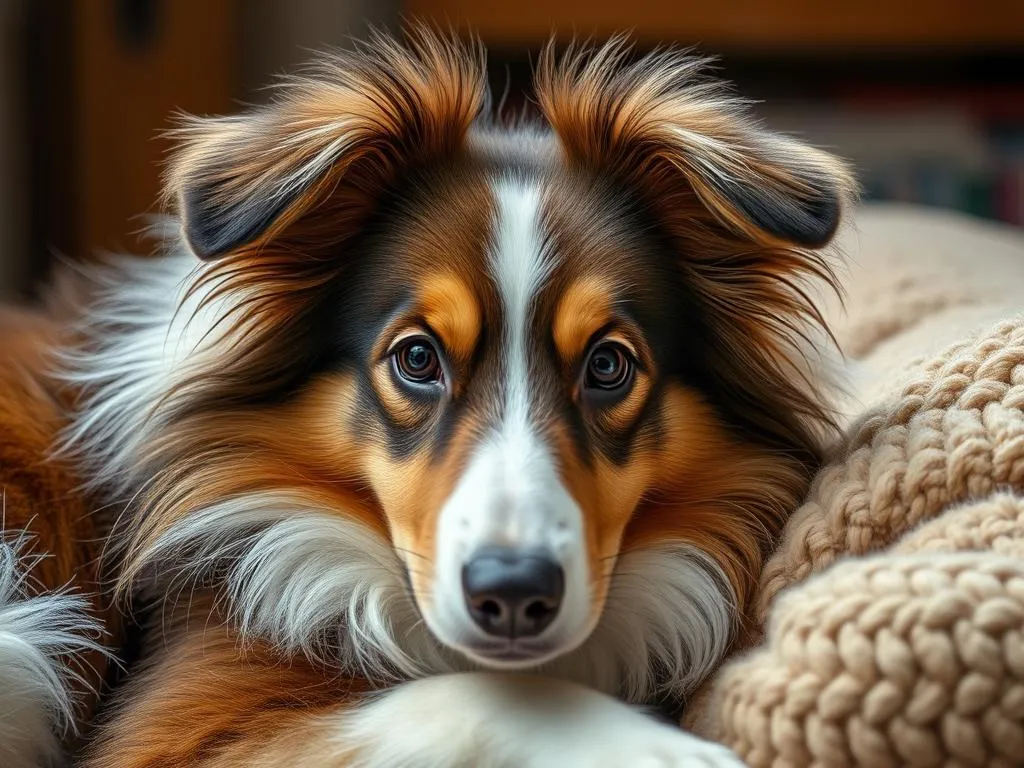
Understanding the behavior of our furry companions is essential for building a fulfilling relationship. Among dog breeds, Shetland Sheepdogs, commonly known as Shelties, are often recognized for their affectionate nature. But the question arises: do Shelties like to cuddle? This article delves into the characteristics of Shelties, their cuddling behavior, and how to create a warm, loving environment for cuddling.
Understanding Shelties
Breed Characteristics
Shelties are medium-sized dogs with a striking double coat, typically characterized by their long, flowing fur and a charming mane that gives them a distinctive appearance. Their expressive eyes and alert posture make them incredibly endearing.
When it comes to temperament, Shelties are known for their intelligence, loyalty, and affectionate demeanor. They are highly trainable, often excelling in obedience and agility tasks. Additionally, Shelties have a moderate activity level; they thrive on regular exercise but also enjoy lounging around with their families. Their social needs are significant, as they tend to form strong bonds with their human companions.
Historical Background
Originating from the Shetland Islands, the Shetland Sheepdog was initially bred for herding sheep and other livestock. These dogs were invaluable to farmers, showcasing their intelligence and strong work ethic. Over time, Shelties transitioned from working dogs to beloved family pets, further deepening their connection with humans. This evolution has created a breed that is not only loyal and hardworking but also affectionate and eager to please.
Cuddling Behavior in Dogs
What Does Cuddling Mean for Dogs?
Cuddling, in the canine world, signifies a display of affection and comfort. For dogs, cuddling can mean snuggling up to their human companions, seeking warmth, and establishing a sense of security. Physical affection is crucial for dogs, as it reinforces their bond with their owners and helps them feel safe in their environment.
Why Some Dogs Enjoy Cuddling
Several factors contribute to why dogs, including Shelties, enjoy cuddling. Socialization plays a pivotal role; dogs that have been positively exposed to human interaction from a young age are more likely to seek physical closeness. Additionally, cuddling provides dogs with a sense of security and comfort, helping to alleviate stress or anxiety.
Different breeds exhibit varying tendencies towards cuddling. While some breeds are naturally more affectionate, others may prefer their space. Understanding these differences can aid in recognizing what your Sheltie desires in terms of physical affection.
Do Shelties Like to Cuddle?
General Affection Levels of Shelties
Shelties are generally known for their affectionate nature. Their strong bond with humans makes them eager to express love and companionship. Compared to other breeds, Shelties tend to be more cuddly, enjoying the warmth and comfort of human interaction. This breed often seeks out their owners for cuddles, especially after a long day or during quiet moments at home.
Factors Influencing Cuddling Preferences
However, it’s essential to remember that individual Shelties may have varying preferences when it comes to cuddling. Factors such as personality differences within the breed can influence how much a particular dog enjoys cuddling.
- Age and Maturity: Younger Shelties may be more energetic and less inclined to cuddle, while older dogs often mellow out and seek comfort in physical affection.
- Past Experiences: Dogs that have had positive experiences with cuddling are likely to enjoy it more than those who may have had negative interactions or traumas.
Signs Your Sheltie Wants to Cuddle
Recognizing when your Sheltie wants to cuddle can enhance your bond. Watch for these body language cues:
- Tail Wagging: A wagging tail often indicates happiness and a desire for interaction.
- Leaning In: If your Sheltie leans against you or snuggles close, it’s a clear sign they’re seeking affection.
- Vocalizations: Soft whines or gentle barks can indicate that your Sheltie is looking for attention.
Behavioral patterns, such as following you around or lying close by, also suggest a desire for closeness.
Tips for Encouraging Cuddling with Your Sheltie
Creating a Comfortable Environment
To foster a cuddly atmosphere, ensure your home is inviting. Ideal spaces for cuddling include cozy beds or soft sofas where your Sheltie can snuggle with you. Consider the temperature; a warm, inviting environment makes cuddling more appealing for both you and your dog.
Building Trust and Affection
Building trust is crucial for encouraging your Sheltie to cuddle. Spend quality time together through play and training, which strengthens your bond. Positive reinforcement, such as treats or praise when your Sheltie initiates physical closeness, can help them associate cuddling with positive experiences.
Timing and Approach
Timing is essential when it comes to cuddling. Recognize the right moments—after a walk, during a relaxing evening, or when your Sheltie displays signs that they want to be close. Gently inviting your Sheltie to cuddle, perhaps by patting your lap or softly calling them, can create a welcoming atmosphere.
Benefits of Cuddling with Your Sheltie
Emotional Connection
Cuddling strengthens the emotional bond between you and your Sheltie. This physical closeness fosters trust and affection, enriching your relationship. Moreover, studies have shown that cuddling can have a positive impact on mental health, reducing feelings of loneliness and anxiety.
Physical Benefits
Cuddling is beneficial for both you and your Sheltie. Physical touch can lead to a reduction in stress levels, promoting relaxation and comfort. For dogs, cuddling can help regulate their heartbeat and create a sense of calm, contributing to their overall well-being.
Behavioral Benefits
Cuddling can also positively influence your Sheltie’s behavior. The act of cuddling reinforces your bond, leading to improved obedience and behavior. Additionally, it can help alleviate anxiety or behavioral issues, providing your dog with a secure feeling.
Conclusion
In summary, while many Shelties enjoy cuddling, individual preferences may vary. Understanding the affectionate nature of Shelties, their cuddling behavior, and the benefits of physical closeness can foster a loving relationship. By creating a comfortable environment and building trust, you can encourage your Sheltie to express their affection through cuddling. Embrace the unique bond you share with your Sheltie and cherish those moments of warmth and love.
FAQs
Do all Shelties like to cuddle?
Not every Sheltie has the same cuddling preference. While many enjoy cuddling, some may prefer their space depending on their personality and past experiences.
How can I tell if my Sheltie wants to cuddle?
Look for body language cues such as tail wagging, leaning against you, or following you closely. Vocalizations like soft whines can also indicate a desire for affection.
Can cuddling help with my Sheltie’s anxiety?
Yes, cuddling can provide comfort and security for anxious dogs, helping to alleviate stress and promote relaxation.









